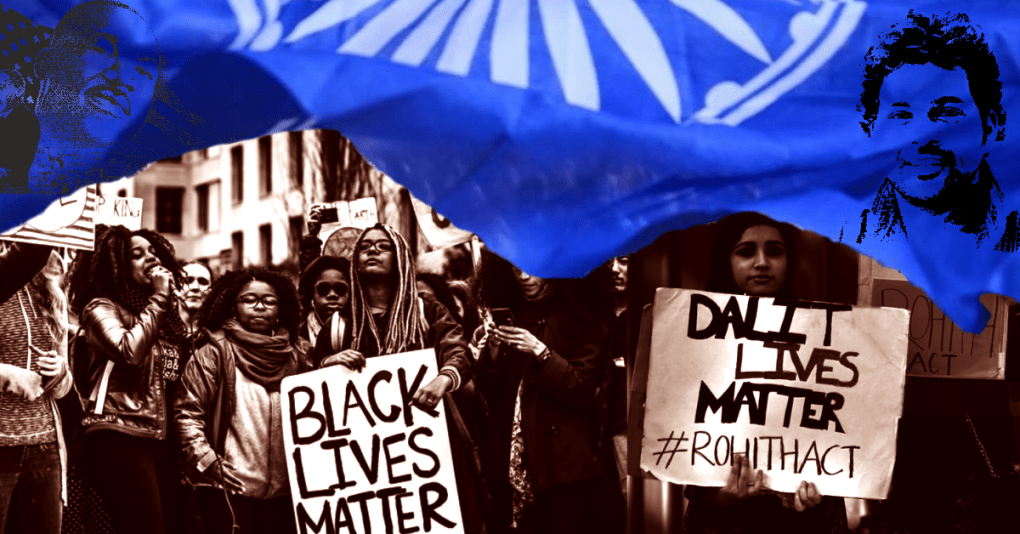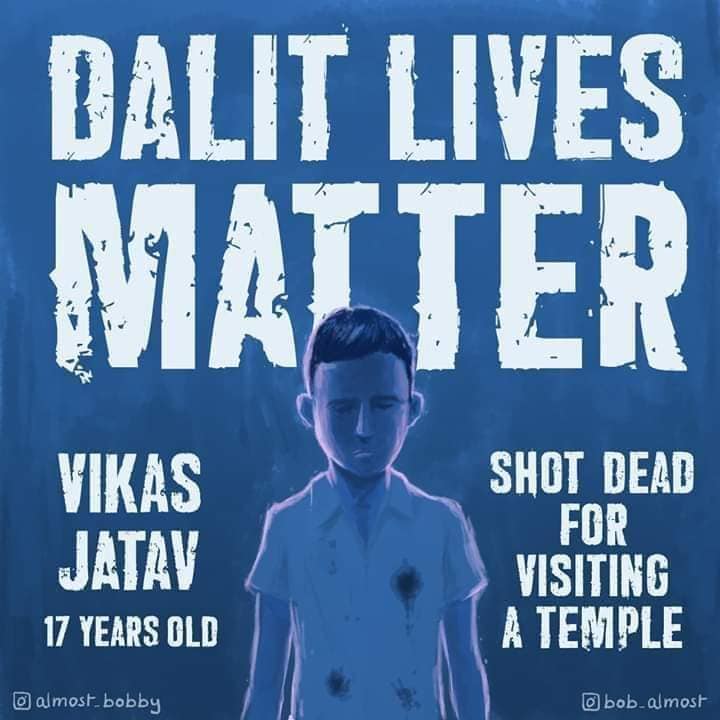
#DalitLivesMatter – What Can We Learn From #BlackLivesMatter
Dalit movement is a vibrant movement. The growing arguments and counterarguments in the Dalit movement on the issues of religion, strategies for emancipation, feminism, democracy, policies, and culture show the vibrancy within the Dalit movement. Recently, the Dalit movement has shown much more power to mobilise not just in India, but also all over the places. It has been working with several transnational movements and stands in solidarity with submerged classes all over the world. In a word, the Dalit movement has grown from strength to strength.
Black Lives Matter movement was founded by three women. Though the movement is decentralized, it has made a tremendous impact recently evident after the protests emerged in all the states of USA against social injustice and racial discrimination.
The focus on human life is a key to keep the movement alive. Similarly, when we study the recent movements of Dalits: be it massive mobilisation after Khairlanji massacre in 2006 where millions rose up or Una atrocity when people agitated all over or mobilisation after the dilution of Prevention of Atrocity Act. The power to mobilise is growing in the Dalit movement.
The race is a critical issue and it can be argued that caste in India has some characteristics of racial discrimination. It may or may not have a biological race at its base, but the cultural race is at the core of the caste discrimination.
If we have to use a simple term of understanding caste in terms of race, we can say that caste is the racialisation of the iniquities and inequalities controlled by the endogamous preservation of bloodlines since last 1500 years when the people living in Indian subcontinent stopped marrying outside their caste groups.

The caste system is many races hierarchically racialized. This is the case of graded racism, and color underpinning it at critical junctures, particularly in marriages.
This is a key difference between racism elsewhere and graded races in India.
The BLM movement is not talking of All Lives Matter and this is an important strategy. Lives may be lost in interpersonal rivalries or in wars, but they are not lost due to institutionalized discrimination. And this is important to expose the structural discrimination behind the loss of people’s lives.
The three words “Black Lives Matter” unites people from all over to fight against invisible structures and institutions which are the part of democratic country showing itself that the States can be an accomplice in perpetuating the injustice. In the case of George Floyd, it is writ on walls.
While Dalits in India have shown their solidarity with the Blacks and other oppressed brothers and sisters, they will need to find the strategies where the things matter.
Unlike the USA, India is much more diverse in terms of languages, regional cultures, and political landscape of its 30 odd states. And hence, the national movement of Dalits is remarkably different from movements in the states of the USA. That means that the Dalit movement must fight on sub-national levels and at a national level. India is also not a two-party system, and Dalits are divided into several parties at the state and national level. The rise of the BSP which became the third-largest national party at one time in India showed the political strength and possibility to challenge the status quo politics managed by a few castes.
This means that besides Dalits mobilizing for the “lives” of their brothers and sisters lost to the social and institutional discrimination, political mobilisation is a key to social justice. Another feature of the caste is its support of the Hindu religion. As Babasaheb Ambedkar says that caste is the breath of Hinduism. The inertia of religious beliefs is not easy to move, but it is not impossible, as by nature Hinduism is amorphous and not a monolith as described by the neo-monist Brahmins. It is fractured in terms of caste and divergent creeds; one needs to look at Raidas panth, Kabir panth, Ayya Sect, Lingayats, and new religious movement among OBCs in Maharashtra like Shiv Dharma.
With the advancement of social media, the power to shape opinions do not lie in the hands of a few though we know that social media can be tweaked, but who can stop a dedicated community of vocal people to keep on creating opinions and challenging the authoritarian regimes. It needs a focused communication strategy with proper messaging and dissemination.
With three words “Black Lives Matter” uniting people at large, the Dalit movement can come up with effective ways of addressing their issues and educate others about it. This is more or less happening now. The Dalits can mobilise not only in India but throughout the world. This is also evident. The greatest difficulty is how this heterogeneous and linguistically diverse movement can be organized and institutionalised. This is a bigger problem and whoever solves it, solves the problem of caste-based discrimination once and forever.
Author – Mangesh Dahiwale



+ There are no comments
Add yours